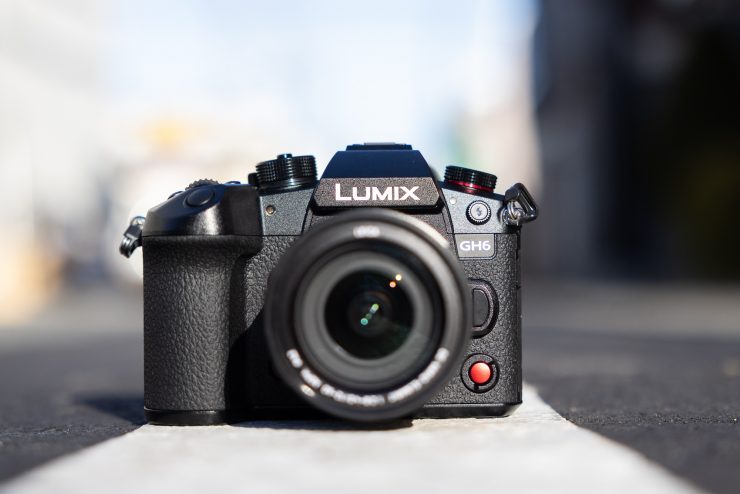
Panasonic recently announced its new GH6 M4/3 hybrid mirrorless camera. We did a very extensive review of the GH6 that you can read here.

As a follow-up to that review I spoke to Yosuke Yamane, Director, Imaging Business Unit Panasonic Corp. and asked him several questions regarding the GH6:

How long has the GH6 been in development for?
Since we introduced the GH5 in 2017, it has been used by many creators around the world and received many responses. During the five years since the introduction of the GH5, we have listened to the opinions of our customers and in order to respond to their requests, aiming to achieve a higher level of image quality, expressiveness and operability we worked to create a new generation of engine and sensor and developed a camera technology that maximizes the performance of those new devices.
When we announced the development last spring, we received even more responses and the expected value exceeded our expectations. In order to meet the expectations of our creators, we have spent a lot of time establishing high performance that will satisfy them.
We apologize to our customers who have been waiting for our introduction, but we were able to establish a performance without compromise that we can deliver to our customers with confidence.
What were the main goals you wanted to achieve when designing the GH6?
We have developed the GH6 with the aim of providing a higher level of visual expression that will satisfy the needs of our customers so that creators all over the world can create higher-level works as they wish, and to deliver new emotions to LUMIX fans who have loved GH. For this purpose, we have newly developed an image processing engine and image sensor.
Our theme for the development of the new image sensor was to achieve a dynamic range performance close to that of a full-frame camera, even though it is a micro four thirds sensor, while at the same time achieving the high-speed characteristic of micro four thirds sensors. As it was a very challenging project, the process was a series of hardships, but I think we have reached the point where we can draw an excellent output that can further advance the concept of image creation that LUMIX has.
The new image-processing engine has twice the processing power of previous models and, when combined with the new sensor, is capable of producing images with a rich sense of three-dimensionality and depth, which are clearly different from previous MFTS models, and create the industry’s highest level of slow-motion images, such as 4K 120p, FHD 240p and 300p, giving a feeling of floating and immersion.
With the development of the GH6, we will provide creators with image quality, expressiveness and operability that are one rank above, and contribute to the creation of high-quality content by creators.
Has the M 4/3 market diminished in the last few years with the rise of full frame sensor cameras?
Although the full-frame market is expanding as many companies enter the full-frame mirrorless market, we expect the demand for MFTS, which has unique characteristics, to remain firm.
The compact size of the MFTS, including lenses, and its excellent mobility is a value that full-frame does not have. By taking advantage of a wide range of MFTS lenses our company is able to propose a system that can be used for any shooting scene.
The strength of MFTS is its compact size including lenses, mobility, fast response, optimum depth of field and excellent interchangeability. MFTS can be used not only for professional shooting scenes but also for casual scenes that YouTubers require. In this way, MFTS is an extremely well-balanced and easy-to-use format for a wide variety of scenes, making it a format that can be used by a wide range of creators.
Is there still a big enough market for M4/3 cameras in 2022?
As I mentioned earlier, M4/3 is a well-balanced format that combines mobility, speed and a reasonable depth of field. I believe that creators will find value in these characteristics of M4/3, and I expect that demand will exceed a certain level in 2022.
Who is the GH6 being targeted at?
As a core target, we have been developing for professional video creators who are engaged in scenario-based videos, such as promotional videos, commercial content and short films, documentary films and event recording, such as weddings, etc.
On the other hand, I believe that GH6 can be used not only by such professionals but also by creators who want to promote themselves by creating cool images and video expressions that are different from other people through video streaming, such as YouTube.
The GH6 also features beautiful photography as well as video. We also hope that hybrid creators who want to start full-fledged video shooting through their work or hobbies and complete photography and video shooting with this one system, will love this product.
AF still seems to be the Achilles Heel of Panasonic mirrorless cameras. Is Panasonic working hard to develop a new system for future cameras?
In the development of the GH6, AF was considered to be a point to be strengthened, and we have been studying all possibilities including PD for a long time. However, at the timing of the GH6, it was the best overall balance between technical factors, such as “image quality level that can be provided” and “progress in AF technology with the new engine”, and factors like “development timing that can be provided to customers” and “price”.
As a result, the GH6 does not use the PD system, but the new engine’s AF technology has evolved from the previous model. In particular, in terms of “what to match”, we have thoroughly improved the performance of object recognition algorithms. The new generation engine significantly speeds up the detection of objects, and advances in automatic recognition algorithms improve the accuracy of the recognition system. In addition, the camera automatically detects the shooting intent based on the angle of view and keeps the camera in focus while preventing missing backgrounds. Of course, in terms of “how to fit”, the new engine’s processing power has been greatly enhanced, making it much better than before.
But please don’t get me wrong, this is not to say we don’t do PD. LUMIX continues to explore the possibilities of all methods, including PD. The important thing is to keep evolving towards more practical AF performance. However, I think there is a great potential for further evolution by combining different methods, not only PD, with the AF technology that we have cultivated up to now. Toward the future, we will continue to work to improve AF performance from a variety of points.
The LUMIX S5 is more expensive than the GH6. What benefits or advantages do the GH6 have over the S5?
The GH6 maximizes the M4/3 system’s strengths: high speed, mobility and optimal depth of field. With new engine and sensor, image and video readout and processing speed are significantly faster, and all codecs are supported. In particular, we are confident that we will be a strong partner in broadening the scope of creators’ work by 4:2:2 10 bit Cinema 4 K 60p video recording as well as 4:2:0 10 bit 5.7K 60p video recording, which can record high-resolution video exceeding 4K with HDMI simultaneous output.
On the other hand, in pursuit of the expressive power of full-frame features, the S5 is a compact and lightweight product that is packed with still image and video capabilities cultivated in the S1 series. Creators can choose the model according to the content they want to shoot.
Does Panasonic plan on bringing out any new M4/3 lenses in the near future?
Our company introduced the 25-50 mm F1.7 last year in time for the introduction of the GH6. Together with the existing 10-25 mm F1.7 the lineup has expanded to enable flexible one-man operation for any shooting scene. In the future, we are developing a M4/3 lens that can capture more impressive scenes with the GH6, so please look forward to it.
Does Panasonic have any plans to develop anamorphic lenses for M 4/3 cameras?
Anamorphic photography enables cinemascope-sized cinematography with a sense of realism like a movie, and it is truly one rank higher in visual expression. And I think that creators want to try that someday.
For creators who shoot with anamorphic lenses, the GH6 offers features that support shooting on the body side, such as anamorphic mode and anamorphic de-squeeze display.
On the other hand, as for anamorphic lenses themselves, we will listen to the opinions of our customers and consider from the viewpoint of what kind of value Panasonic can provide in addition to market needs.





